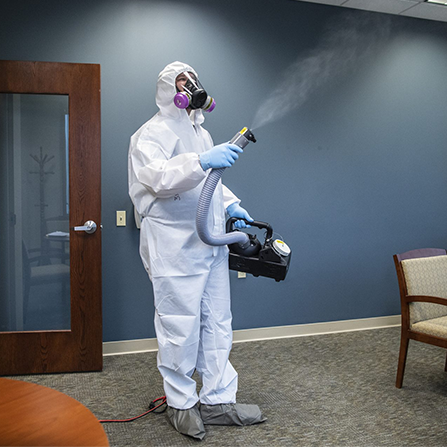Services

According to the World Health Organization (WHO), Coronavirus (presently called 2019-nCoV) is a recently discovered infection that causes infirmities going from the regular virus to more extreme entanglements, for example, Severe Acute Respiratory Syndrome (SARS) and Middle East Respiratory Syndrome (MERS). These infections can be transmitted among creatures and individuals effectively and rapidly. The episode was broadcasted a public health emergency on 30 January 2020.
Covid is a Highly Contagious Illness. Some Corona virus can be moved from individual to individual, particularly after close contact with a contaminated individual.
As of now, there is no antibody or explicit treatment found that can treat or cure 2019-nCoV. However, certain side effects can be dealt with dependent on the patient's clinical condition.
Treatment Methods
Disinfectants and Sterilants play a significant part in accomplishing sterile atmosphere at working zones and other related vulnerable premises. Disinfection treatment utilizes an exceptionally successful chemical disinfectant that contains a high level of anti- microbial properties. The treatment contains surface and air space disinfection by surface spray and misting / fogging through ULV or thermal fog equipment. The ULV mist/fog can reach at all distant spots inside the treated territories and in this way microbial contamination can be managed. The treatment territory should be exposed to the chemical for at least three hours, after which the premises can be utilized safely.
Precautions
- Clean hands frequently, using soap and water or an alcohol-based sanitizer
- Cover sneezes or coughs with elbow or tissue. Discard tissue. Clean hands again
- Avoid close contact with people that may have cold or flu-like symptoms.
- Avoid unprotected contact with wild or farm animals.
- Don't eat raw or undercooked animal products.
